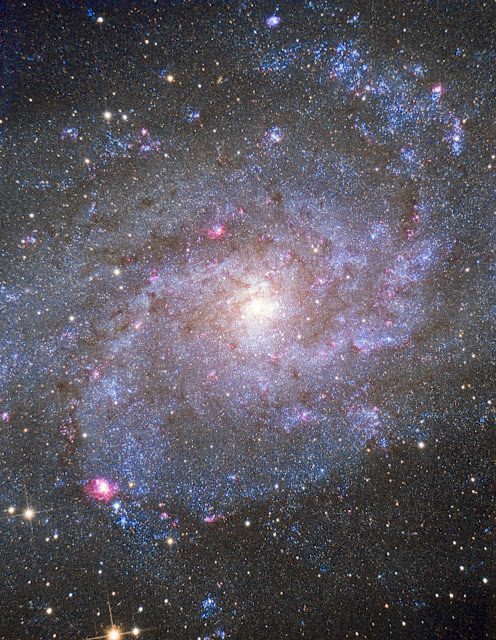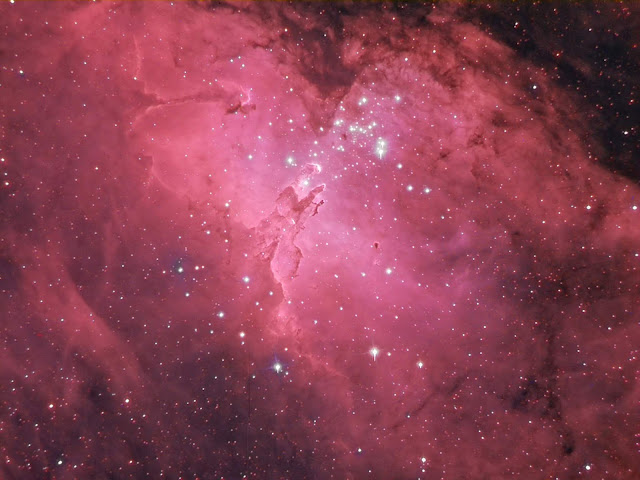Inside the M33 galaxy

At almost 3 million light years from here, in the Triangulum Constellation, we find the second closest galaxy after Andromeda. It’s a splendid spiral seen face-on, which is usually very evanescent but rich with splendid objects. In this long exposure image (a little over nine and a half hours) carried out with a 25cm f4.8 Newtonian telescope and a color camera CCD (ST-2000XCM) you can have the spectacular confirmation of the nature of those spiral nebulae. What seemed like a dim nebulosity is actually the light of billions of stars and thousands of nebulae, some of which are dozens of times larger than the magnificent Orion Nebula. Going beyond magnitude 22, a brightness 2 million 300 thousand times dimmer than what can be perceived by the naked eye, this image even shows the great clouds of blue stars, born only a few million years ago, and a background sky constituted by millions of tiny stars. If the astronomers of the past had had the same optical and tech...





